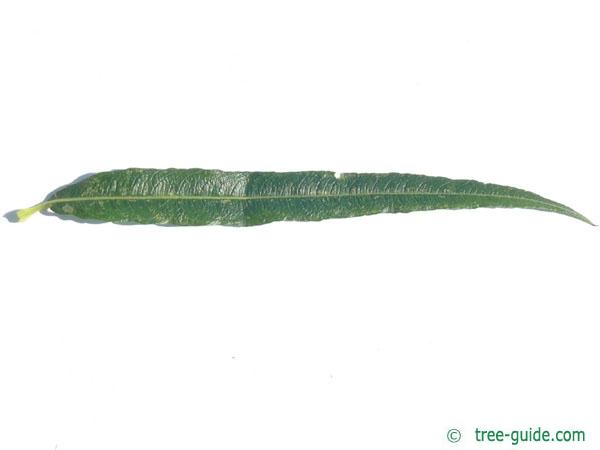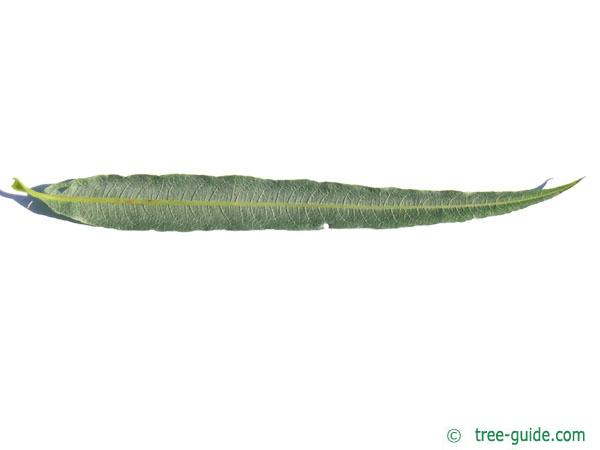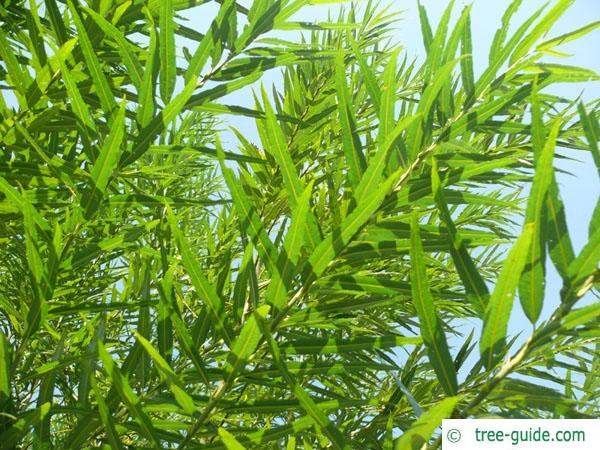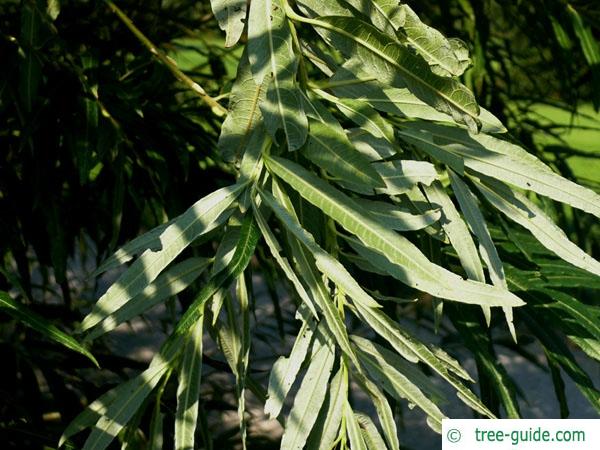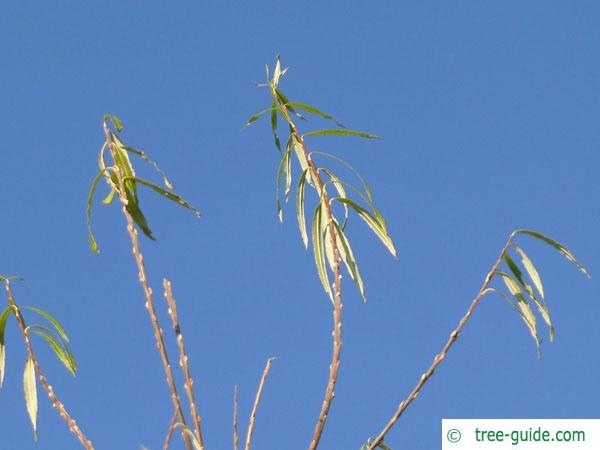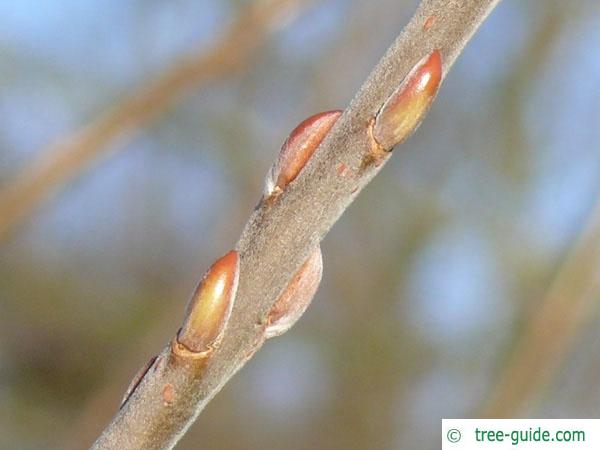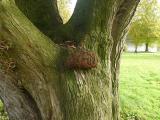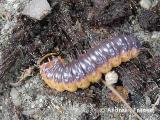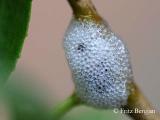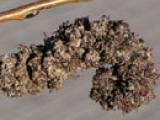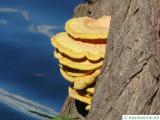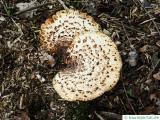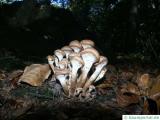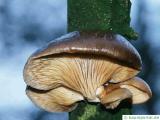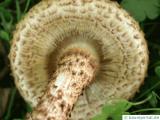Basisdaten
description:
The Osier is native to Europe and western and central Asia. Like all willows is the Osier an important bee pasture.
Tree profile
name botanical:
Salix viminalis
other name:
Osier
family:
Willow family (Salicaceae)
species:
deciduous tree
height:
up to 8 m (26 ft), often multi-stemmed
leaf:
The leaves of Osier are slim-lanceolate, up to 25 cm (9.8 in) long and pointed. The leaf margins are finely serrated. The underside of the leaf is silver-gray.
leaf shape:
oblong
leaf margin:
serrated
leaf position:
alternate
fall foliage:
yellow
flowering:
April - May
blossom color:
gray-white
blossom description:
The gray-white catkins of willow are 3 - 6 cm (1.2 - 2.4 in) large.
fruit:
Catkins of many small seeds, dissolve readily in the wind and germinate quickly on the ground.
branches:
The branches are thin, flexible and greenish. The reddish buds are elongated and lie on.
bark:
The bark is smooth white-gray, later fissured gray to black-gray.
root:
Shallow-rooting plant, weiträumig
location:
Sun to slight shade
soil:
sandy to loamy to strong loamy
ph value:
acidic to alkaline
usage:
pioneer plant, riverbank and embankment planting







